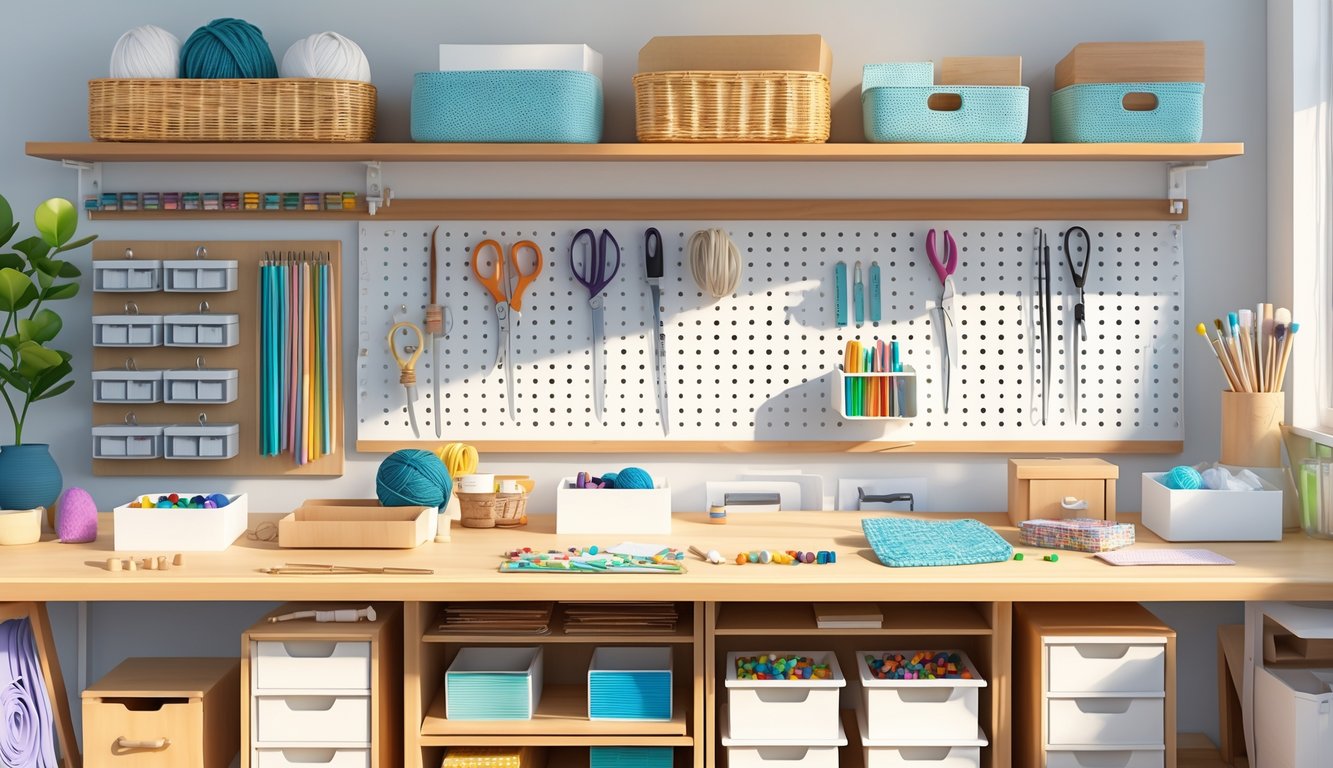
Clever Visibility Hacks for Craft Supplies
I pulled out the washi tape drawer for the third time today—useless, half the rolls missing in action. This is my life. If you think clear bins and labels sound boring, you haven’t experienced the joy of not finding glue sticks in your kitchen.
How Clear Storage Bins Make a Difference
I used to have twelve identical boxes—couldn’t see a thing, total chaos. Someone finally told me to swap for clear bins. Suddenly, everything was visible, and I couldn’t ignore it. No more buying the same yarn twice or sweating while I dig for gel pens.
I read (maybe here? craftsbliss) that crafters love clear shoe organizers because the pockets force you to actually see your hoard. It’s not about being a minimalist; it’s about finding my fabric scissors without a meltdown. Clear bins stack up, sure, but the real trick is seeing what’s inside: if I see it, I’ll use it.
One month, I left a project half-finished because I couldn’t find my decoupage glue. With clear bins, the duplicates stare at me like ghosts. Even experts say cheap clear bins work best when you separate by project, not just by supply type. That surprised me. Sorting embroidery floss and fabric scraps in separate bins saves me so much time—no more random digging.
Labeling for Ease and Efficiency
I started with masking tape and Sharpie labels—those peeled off in a week. Got a label maker, went wild. Now I’ve got bins for “adhesive dots,” “metallic thread,” and—wait, how do I have six reusable stencils?—and I can actually start projects without hunting. Labeled clear bins = vending machine for ideas.
Experts always talk about “cognitive load” (I heard it on some productivity podcast, whatever). They’re right. If my bins actually say what’s inside, I stop second-guessing and just grab what I need. Sometimes I color-code: red for sewing, blue for beads, yellow for papercraft. Labeling is boring, but it saves me so much time.
One Better Homes & Gardens tip suggested icons for kids. I tried that, but my daughter still put fabric paint in the yarn bin. Printed labels with actual words? They stuck. Both literally and as a habit.
Say Goodbye to Losing Craft Supplies
How is it even possible to lose a whole bag of googly eyes? I mean, I swear I bought them. I remember the receipt, the weird cashier, the existential crisis at checkout. But then, mid-project, they’re gone. I’ve tried the whole “transparent bins plus labels” thing. Looks great until I’m rooting through the freezer and find my pom-pom trim next to the frozen peas. I added “supply checks” to my planner, which sounds responsible, but it’s just me frantically counting glue sticks at 2 a.m. and then giving up halfway through.
Some random blog (I think it was this one) says you should be able to find anything in five minutes. Five minutes? I’d kill for five minutes. If it takes longer, I assume my supplies have unionized and are hiding out of spite. I swapped out those sad old drawers for clear bins, which mostly means I now have to move three bins to get to the one I want. Still better than digging through a dark cabinet and discovering a dried-up paint tube from 2009. The only advantage: when I lose something now, it’s probably right in front of me, glaring at me through a plastic wall. That’s as close to “organized” as I’m getting.
Maximize Small Spaces With Vertical Solutions
Every time I run out of space, I promise myself I’ll stop hoarding felt. That’s a lie. I just stack another box on top of the pile and hope gravity’s feeling generous. And vertical storage? I don’t know, it’s not magic, but it’s the only thing standing between me and a craft avalanche. If you don’t use your wall space, you’ll end up with a closet full of mystery junk and no idea where your iron went. Especially if you rent—forget drilling, forget closets, just embrace the wall.
Shelving Units That Save Floor Space
Never thought I’d own an actual tape measure, but here I am, measuring every inch of wall like I’m prepping for a home inspection. Shelving units that climb the wall are the only way I can breathe in my tiny space. IKEA’s ALGOT (is that still what it’s called? Did they rename it?) claims their tallest shelf holds as much as three bins. That’s a lot of yarn. Modular wire shelves with adjustable tiers? Saved me from crawling around on the floor looking for my rotary cutter. I’d pay extra for shelves with hooks for scissors, honestly.
It’s not just about stacking wood and metal. GoTinySpace says vertical shelves turn sad apartment corners into craft zones. I still forget which bin has my buttons, but at least I’m not playing Jenga with storage boxes every time I want to sew. I hung the paint bottles up high—no magazine ever warns you that “seeing every label” just means you’re forced to confront how messy you are. That was my one clever move this year.
Floating Shelves for Instant Storage
Saggy old bookshelves? I’m done. Floating shelves are the only thing that look halfway decent and don’t collapse under the weight of my questionable craft supply choices. The box says 20 lbs. max, but I’ve definitely tested that and so far, nothing’s crashed to the floor. Craftsy Hacks claims you should stick floating shelves in bathrooms and laundry rooms for extra stash space. Sure, why not? I’ll put glue sticks in the medicine cabinet if it means I can find them.
Half my half-finished projects end up on these shelves, which is better than tripping over them. I stuck a magnetic strip under one shelf for bobbins and pins, but nobody warns you about wall studs. If you like chasing jars at 3 a.m., skip the stud finder. I refuse to hire a contractor for a shelf, but with the right brackets (I read too many reviews, none helpful), even my one surviving fern is thriving up there. Plants hate me, so this is a win.



